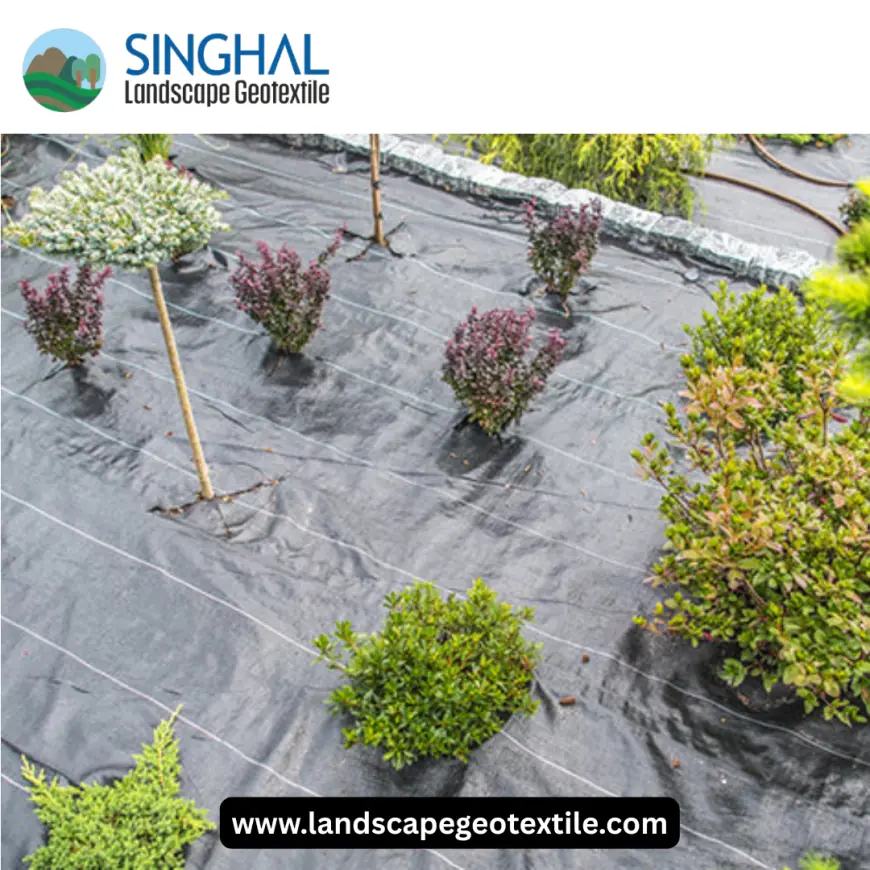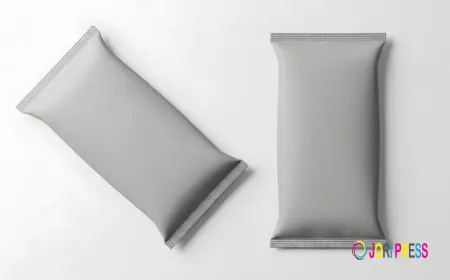Weed Barrier Fabric: The Key to Effortless Landscaping and Garden Maintenance

Keeping a well-maintained, inviting garden or landscape can create constant weed problems. Weeds compete with your desirable plants for nutrients, water, and sunlight while making the ongoing maintenance of your garden miserable and more time-consuming. Luckily, modern methods for gardening have improved the process of weed control, and one of them is weed barrier fabric. This landscaping fabric weed barrier is durable, long lasting, and effective as it does not allow weeds to penetrate while allowing important water and air to be filtered through to the soil. Regardless if you are a homeowner seeking a quick solution, or an experienced landscaper looking to keep those weeds away for good, understanding the use of weed barrier fabric, it's advantages, as well as proper installation can enhance and promote your outdoor experience.
Understanding Landscaping Fabric Weed Barrier and Its Functionality
Weed barrier landscape fabric is a permeable fabric specifically made to suppress weeds by blocking sunlight and providing a physical barrier. Landscape fabric weed barrier are made from woven or non-woven polypropylene, polyester, or recycled materials. This fabric is designed to allow water, nutrients, and air to pass through while being strong enough to act as physical weed barrier. By placing this fabric over bare soil or mulched beds, not only does it inhibit the germination and growth of weeds without the use of chemical herbicides, but it also accomplishes several other important gardening functions. Primarily the work you do to reduce manual weeding, minimize soil erosion and create a good environment for the plants you want to encourage. You are essentially maintaining an invisible barrier to allow you to keep your garden under control and enhance sustainable gardening practices.
Types of Landscape Fabric Weed Barriers and Their Best Uses
Not all weed barrier fabrics are created equal, or even similar, as they are manufactured in various configurations (and types) for various applications. Woven landscape fabric weed barrier will consist of fibers that are tightly woven and provide high tensile strength which works well for pathways or driveways or high traffic traffic areas. Non-woven weed barriers are bonded fibers that allow defendant water permeability and soft to touch, therefore are best suited for flower beds, vegetable gardens or planting areas. There are also some fabrics specifically designed with UV resistant properties to maintain their use in high exposure to the sun. Heavy duty versions are available for more heavy use environments such as steep slopes or high traffic areas.
Benefits of Using Landscape Fabric Weed Barrier in Your Garden
Weed barrier landscape fabric can offer you the advantages beyond weed control. Such as helping in controlling the evaporation of moisture from the soil so that plants have built-in moisture levels they expect and good access and timing of moisture. The fabric also aids in controlling soil erosions, with slopes or areas of exposure during the rainy season. This helps to stabilize the ground. The additional environmental benefits of keeping invasive grasses and weeds out of your garden (but maintaining all the native plants you are using for aesthetic, possible consumption, and other practices), to minimizing any use of pesticide/herbicide as more and more people want organic gardening and accessibility, means having another form of connotation with cactus gardening. Factually, Garden fabric weed barrier is easier to control than hoeing, pulling weeds and carrying them to the local batting cage for disposing of and packaging. Thus, make gardening more efficient, reduce labour, build better landscapes, and, overall, improve the health, overall landscape.
Choosing the Right Landscape Fabric Weed Barrier for Your Project
Choosing the right fabric depends on your needs for your landscape. If your area is under heavy foot or vehicle traffic (e.g. sidewalks and driveways) then better with a heavyweight, woven fabric. For flowerbeds or vegetable gardens, non-woven, lightweight fabrics are best as they allow for air exchange and are easier to plant into. Also consider the fabric for UV resistance if it is going to be subject to the sun for a longer period of time, and possibly weight when assessing strength and longevity. If you are placing the fabric next to lakes or other river/shoreline areas, then consider using a specifically designed aquatic fabric not water resistant and environmentally safe. The specifications on the product, and customer reviews, will also help you determining the best product to meet your needs for strength, permeability, and longevity for your landscape.
Conclusion
Using Heavy duty weed barrier fabric on your outdoor projects can be a smart, environmentally friendly tool to help keep your landscape clean and healthy. A weed barrier can keep weeds from taking over, save water, and help protect the soil from erosion—a great investment for both the homeowner and professional yard-care provider. With so many options available at stores such as Home Depot and other quality suppliers, it is easier than ever to select some kind of fabric that fits your need. You'll want to maximize the efficacy of the fabric for your project through proper installation to help you to have less work and more time enjoying your garden. As more sustainable gardening practices are asserted, weed barrier fabric is often thought of as a resource to keep your area more green and less maintenance. If chosen and installed properly, weed barrier fabric can lay the groundwork for beautiful, thriving landscapes for years to come.
Frequently Asked Questions
-
What is the expected lifespan of landscape fabric weed barrier?
Most quality fabrics last between five and ten years depending on the sunlight, weather and the quality of installation. -
Can I plant through the fabric?
Yes, you can cut holes or slits for planting which allows for use in vegetable gardens, flower beds and shrub beds. -
Is weed barrier fabric eco-friendly?
Many fabrics are made from recycled polypropylene or polyester and they could be eco-friendly depending on how they are produced and how they’re disposed of. -
Will the fabric stop all weeds?
It will greatly reduce weed growth, but will not eliminate all weeds, especially if the fabric is damaged or incorrectly installed. -
Who is the largest supplier of Weed Barrier Fabric?
Singhal Landscape Geotextile Supplier is a notable name in the industry, especially known for providing a variety of geotextile products. -
Who is the largest exporter of Weed Barrier Fabric?
Singhal Landscape Geo textile is the most recognized supplier of weed barrier fabrics particularly in certain markets such as India and their neighboring markets. -
Who is the largest manufacturers of Weed Barrier Fabric?
Singhal Landscape Geotextile is a well-known manufacturer of weed barrier fabric, particularly in regional markets such as India. -
Should I cover the fabric with mulch?
Yes, mulch, gravel, or stone can provide aesthetic value, UV protection for the fabric, and improve weed suppression.
What's Your Reaction?
 Like
0
Like
0
 Dislike
0
Dislike
0
 Love
0
Love
0
 Funny
0
Funny
0
 Angry
0
Angry
0
 Sad
0
Sad
0
 Wow
0
Wow
0
















































